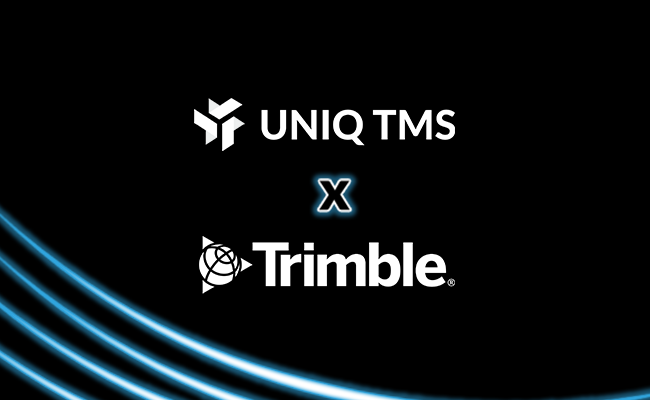Step-by-Step Guide to Implementing Free Transportation Management Software

Transportation management plays a crucial role in the smooth operation of any business that involves the movement of goods. It helps in optimizing routes, reducing costs, and increasing efficiency. However, implementing transportation management software can be a daunting task, especially if you’re on a tight budget. Fortunately, there are free options available that can meet your needs. In this step-by-step guide, we will walk you through the process of implementing free transportation management software.
Understanding Transportation Management Software
Before diving into the implementation process, it’s important to have a clear understanding of what transportation management software is and how it can benefit your business. Transportation management software is a digital solution that helps you plan, execute, and optimize the movement of goods. It provides features like load planning, carrier selection, real-time tracking, and reporting.
Transportation management software plays a crucial role in the supply chain industry by streamlining logistics operations and ensuring the efficient movement of goods from one point to another. It acts as a centralized platform where businesses can manage all aspects of transportation, from route planning to carrier management, in a seamless and cost-effective manner. By harnessing the power of technology, companies can enhance their operational efficiency and stay competitive in today’s fast-paced market.
Key Features of Transportation Management Software
Transportation management software comes with a wide range of features that can streamline your logistics operations. Some key features to look out for include:
- Load planning and optimization
- Real-time tracking and visibility
- Route optimization
- Carrier management
- Freight audit and payment
Load planning and optimization is a critical feature that helps businesses maximize the use of their transportation resources while minimizing costs. Real-time tracking and visibility provide transparency throughout the shipping process, allowing companies to monitor the status of their shipments and address any issues promptly. Route optimization ensures that goods are delivered in the most efficient manner, reducing fuel consumption and carbon emissions. Carrier management simplifies the process of selecting and managing transportation partners, fostering strong relationships within the supply chain. Lastly, freight audit and payment features help businesses accurately reconcile invoices and ensure compliance with financial processes.
Benefits of Using Free Transportation Management Software
Implementing free transportation management software can bring significant benefits to your business:
- Cost savings: By optimizing routes and increasing efficiency, you can reduce transportation costs.
- Improved customer service: Real-time tracking and visibility allow you to provide accurate information to your customers.
- Enhanced decision-making: With comprehensive reports and analytics, you can make informed decisions to improve your logistics processes.
Cost savings are a major advantage of using free transportation management software, as businesses can identify cost-effective routes and eliminate unnecessary expenses. Improved customer service is another key benefit, as real-time tracking enables companies to provide customers with accurate delivery estimates and updates, enhancing overall satisfaction. Enhanced decision-making is facilitated by the software’s ability to generate detailed reports and analytics, empowering businesses to optimize their logistics strategies and drive continuous improvement.
Preparing for Implementation
Before diving into the implementation process, it’s important to prepare and lay a strong foundation for success. This stage is crucial in ensuring a smooth transition and maximizing the benefits of the new transportation management software.
One key aspect of preparing for implementation is to involve key stakeholders from different departments within your organization. By gathering input from various teams such as logistics, IT, and operations, you can ensure that the chosen software meets the needs of all departments and functions effectively.
Identifying Your Transportation Management Needs
The first step is to identify your business’s transportation management needs. Evaluate your current processes and identify pain points that need to be addressed. Do you need better visibility of your shipments? Are you struggling with load planning? By identifying your needs, you can choose software that aligns with your requirements.
Additionally, conducting a thorough analysis of your current transportation data can provide valuable insights into areas that require improvement. By examining key performance indicators such as on-time delivery rates and transportation costs, you can pinpoint specific areas for enhancement and set measurable goals for the new software implementation.
Choosing the Right Free Software
With a plethora of free transportation management software options available, it’s crucial to choose the one that best suits your business needs. Consider factors like ease of use, scalability, and customer reviews. Look for free software that offers essential features without compromising on quality.
Furthermore, it’s essential to assess the level of customer support and training provided by the software vendor. A user-friendly interface and comprehensive training resources can facilitate a smoother transition for your team and ensure that they can fully leverage the capabilities of the new software.
Step-by-Step Implementation Process
Now that you have laid the foundation, it’s time to dive into the implementation process. Implementing a new software system can be a transformative experience for your business, streamlining operations and improving efficiency. Let’s explore the detailed steps involved in this crucial process.
Before embarking on the implementation journey, it’s essential to conduct a thorough analysis of your current processes and identify areas that can be enhanced or automated through the new software. Understanding your business requirements and objectives will guide you in selecting the most suitable transportation management software that aligns with your goals.
Downloading and Installing the Software
The first step is to download and install the free transportation management software on your designated device. This process may vary depending on the software provider, but generally involves visiting their website, locating the download link, and following the installation instructions. It is crucial to ensure that your device meets the software’s system requirements and that you have a stable internet connection for a smooth download process.
Once the software is successfully installed, take the time to explore its features and functionalities. Familiarize yourself with the user interface and navigation tools to maximize your efficiency when using the software. Additionally, consider customizing the software settings to suit your preferences and workflow, ensuring a personalized user experience.
Configuring the Software to Your Needs
Once the software is installed, it’s time to configure it to your specific needs. Set up your company profile, add relevant details like addresses and contact information, and customize the software according to your preferences. Tailoring the software to align with your business requirements will optimize its performance and enhance your overall experience.
Utilize any available user guides, tutorials, or customer support resources provided by the software vendor to enhance your understanding of the software’s capabilities. These resources can offer valuable insights and tips on how to leverage advanced features and functionalities to streamline your transportation management processes effectively.
Training Your Team on the New Software
A successful implementation depends on the proper training of your team. Organize training sessions to familiarize your employees with the software and its functionalities. Create comprehensive training materials, conduct interactive workshops, and provide hands-on practice opportunities to ensure that your team is well-equipped to utilize the software efficiently.
Encourage open communication and feedback from your team during the training process. Address any questions or concerns they may have and provide ongoing support to facilitate a smooth transition to the new software. By investing in comprehensive training for your team, you can maximize the benefits of the software implementation and drive operational excellence within your organization.
Post-Implementation Considerations
Once the software is up and running, there are a few post-implementation considerations to keep in mind.
Regularly Updating and Maintaining Your Software
Software updates are important for bug fixes, security enhancements, and new feature releases. Regularly check for updates and install them to ensure the smooth operation of your transportation management software. Additionally, perform routine maintenance tasks like data backups and system optimization to keep your software running at its best.
Evaluating Software Performance and User Satisfaction
Periodically evaluate the performance of your transportation management software. Analyze key metrics like cost savings, on-time delivery, and customer satisfaction. Solicit feedback from your team members and incorporate their suggestions for improvement. By continually assessing software performance and user satisfaction, you can make the necessary adjustments to maximize the benefits of your transportation management software.
Overcoming Common Implementation Challenges
Implementing free transportation management software can come with its own set of challenges. Here are some common challenges you may encounter and tips for overcoming them.
Addressing Technical Issues
Technical issues are bound to arise during the implementation process. Ensure that you have a dedicated IT support team to promptly address any technical glitches or concerns. Regularly communicate with the software provider for assistance and updates.
Ensuring User Adoption and Engagement
Resistance to change can hinder user adoption of the new software. To overcome this, involve your team members right from the beginning. Seek their input during the software selection process and provide comprehensive training. Emphasize the benefits of the software and how it will help streamline their work. Encourage open communication and address any concerns or resistance promptly.
Implementing free transportation management software can revolutionize your logistics operations without breaking the bank. By understanding the key features, preparing for implementation, and addressing post-implementation considerations and challenges, you can successfully integrate transportation management software into your business processes. With optimized routes, enhanced visibility, and improved decision-making, you’ll be well on your way to achieving logistics excellence.
Ready to Transform Your Transportation Management?
Discover how Uniq TMS can streamline your logistics operations, enhance efficiency, and boost your bottom line. Click here to learn more and explore our innovative solutions designed to meet your unique transportation needs.

